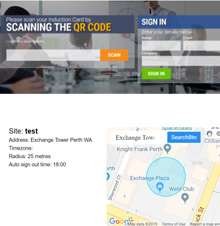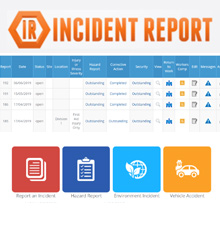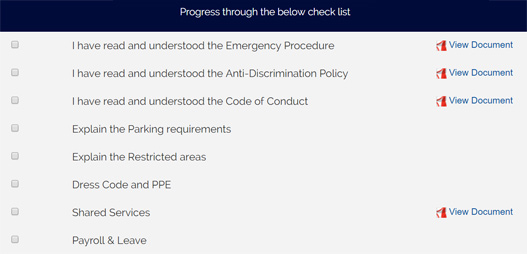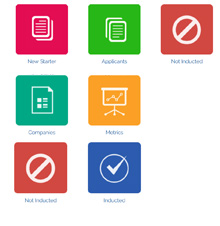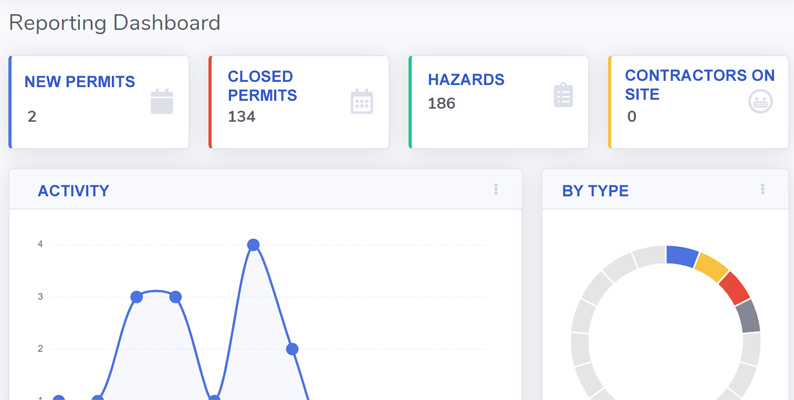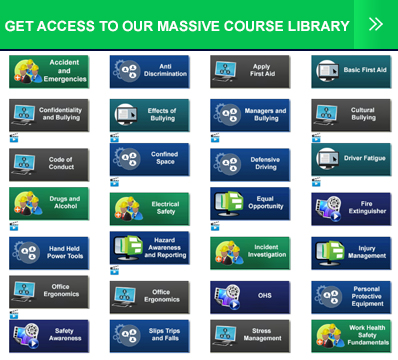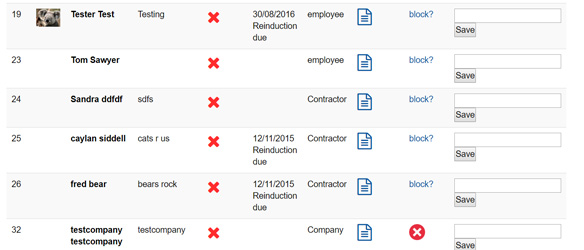AI Mini Course Generator: How to Use AI to Design and Launch Mini Courses
Online Induction >> AI Mini Course CreatorPublished 22/10/2025
 With employees juggling multiple priorities, conventional learning can feel overwhelming, but mini courses deliver knowledge by breaking down training into digestible pieces that are easier to learn.
The rising popularity of this method can be attributed to its alignment with cognitive science principles, which suggest that information is better absorbed when presented in manageable portions. These compact courses allow individuals to assimilate new information without extensive time commitments so they can learn continuously without disrupting their everyday tasks.
With employees juggling multiple priorities, conventional learning can feel overwhelming, but mini courses deliver knowledge by breaking down training into digestible pieces that are easier to learn.
The rising popularity of this method can be attributed to its alignment with cognitive science principles, which suggest that information is better absorbed when presented in manageable portions. These compact courses allow individuals to assimilate new information without extensive time commitments so they can learn continuously without disrupting their everyday tasks.
What are the Benefits of Using AI for Creating Mini Courses?
So why are AI and mini courses a perfect duo? The two together transcends traditional learning patterns. AI tailors learning content so employees get exactly what they need, when they need it, to achieve their learning objectives.AI effortlessly curates knowledge fast. AI-driven platforms can curate content from a myriad of sources such as academic papers, industry reports, and social media discussions. This enables businesses to develop training materials that are up-to-date with the latest advancements and insights. With ease AI can distill this information into bite-sized lessons that are easy for employees to digest which is perfect for today’s on-the-go workforce.
It's your personal instructional design assistant. AI-driven platforms are becoming increasingly intuitive, allowing even those with minimal tech savvy to develop impactful training programs. These tools often come equipped with user-friendly interfaces that guide you step-by-step in designing customised courses. You can incorporate multimedia elements like quizzes and interactive slides that enhance engagement without requiring hours of manual effort. The result? A learning experience that's both dynamic and personalised.
It has predictive analytics capability. Integrating AI into your microlearning strategy also means you can harness predictive analytics to foresee potential areas of confusion or resistance among employees before they even surface. For instance, if a segment of your workforce historically struggles with compliance-related updates, AI algorithms can preemptively suggest additional resources or alternative explanations tailored specifically to their needs. This proactive approach not only smooths the transition but also empowers employees by providing them with autonomy over their learning journey.
It creates interactive content. AI has the potential for creating engaging and interactive content. Through natural language processing and machine learning algorithms, AI can develop simulations or scenario-based exercises that mimic real-world challenges employees might face on the job. This hands-on approach not only enhances engagement but also improves skill acquisition by providing learners with immediate feedback on their decisions.
9 Proven Steps to Build Mini Courses with AI

1. Define the Course Purpose
Before creating content, define your training strategy and the purpose of the mini course. Clearly identify the course goal and the target audience (e.g., new hires, managers, or team leads). This ensures the content directly addresses specific workplace needs, whether it be leadership skills or compliance, which allows AI to generate training material that is precisely relevant to your organisational objectives.2. Research Audience Needs
Use AI to explore the specific challenges, skill gaps, and workplace behaviours of your learners. What precise skills or knowledge should they gain? Employing AI tools can assist educators in analysing industry trends and learner preferences, aligning course objectives with real-world demands. With this data-driven approach, your course will not only meet educational goals but also remain relevant.3. Generate the Course Outline
Ask AI to create a full outline with modules, lessons, and learning outcomes relevant to your workplace scenario. For example, a short course on leadership might include modules on communication, conflict resolution, and team motivation. A structured outline ensures all important topics are covered and provides an opportunity to review the course flow before the course content created.4. Expand Each Module
Develop each module in detail using AI to generate scripts, examples, and practical exercises tied to workplace situations. For instance, a scenario-based exercise could involve handling a missed project deadline or resolving team conflicts. Expanding modules individually allows you to maintain quality, ensure relevance, and adjust scenarios to match your company culture.5. Create Learning Materials
Generate learning materials such as slides, visuals, infographics, or short videos that reflect workplace settings and language. For example, use charts to show KPIs or illustrations of team meetings to enhance engagement. Diverse materials accommodate different learning styles, making the course more effective for employees across departments.6. Add Engagement & Assessments
Incorporate quizzes, reflection exercises, or short role-play tasks to keep learners active and accountable. AI can help create multiple-choice questions, scenario-based challenges, or self-assessments tied to real work situations. This reinforces learning while giving managers insight into the employees’ understanding and progress.7. Refine Tone & Branding
Ensure your learning content speaks your brand's language. Use AI to instantly match the course tone to your corporate culture, whether that's professional or approachable. Clear, professional content helps employees engage more confidently and see the value in the lesson.8. Assemble & Format the Course
Organise all modules, resources, and assessments in your chosen platform, such as LMS software or internal portals. Check that lessons flow logically, links are functioning, and materials reflect real workplace contexts. Proper formatting is critical as it improves usability, making it easy for employees to complete courses without unnecessary roadblocks.9. Generate Marketing & Feedback Assets
Use AI to create internal communications, such as email announcements, intranet posts, to promote the course. Collect feedback through surveys or short quizzes to identify areas for improvement. By combining learner feedback and smart marketing you can create courses that inspires learning and maintains interest, leading to lasting performance improvements.Example AI Prompts for Creating AI Mini Courses
Mini courses are all about using localised and engaging content to quickly achieving learning outcomes. AI is the perfect tool to streamlines content, creating short courses that are engaging, fast, and effective without leaving out any important information. By using descriptive prompts, you can guide an AI to create a wide range of effective short courses and materials, from resources to assessments. Here are 5 examples of AI prompts for creating content for mini courses:Scenario-Based Learning Exercise
Prompt: "Develop a short, scenario-based exercise for new team leaders. The scenario is: An employee consistently misses deadlines on key projects. Provide three different choices for the manager’s response (A, B, C) and a short feedback message for each choice, explaining the outcome and why it's a good or bad approach."
Script for a Short Video
Prompt: "Draft a script for a 30-second video about a new process for approving leave requests. The audience is the company's team leaders. The tone should be concise and energetic, and the script should include a clear call-to-action to log in and try the new features."
Quiz Questions with Explanations
Prompt: "Generate three multiple-choice questions on the topic of cybersecurity best practices for remote employees. Each question should have one correct answer and three plausible distractors. Provide a brief explanation for both the correct and incorrect answers."
Glossary/Flashcard Content
Prompt: "Generate a list of 5 key terms and their definitions related to the 'Project Management.' Format the output as a list suitable for digital flashcards."
Concise Summary of a Long Article
Prompt: "Summarise the main takeaways of the following article on 'The Rise of Flexible Workplaces' for a short course. The summary should be a single paragraph, less than 150 words, and written in a simple, easy-to-digest style for a short course module."

Common AI Training Creation Tools
- AI Course creator- AI Learning Management System
- AI Video Course
It's clear that embracing AI is not an option anymore, it's essential for being competitive in business. Organisations leveraging AI will position themselves to better train their employees effectively and sustain a culture of continuous learning. The sooner your organisaion begins encoroportaing AI into your learning and development strategy the sooner you can start enjoying the rewards - better insights, faster content creation, and more confident learners.





